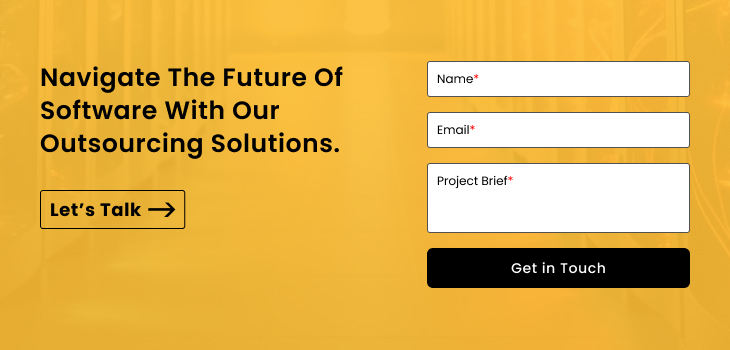
A creative strategy that makes use of cutting-edge technology to facilitate remote medical consultations and treatment is healthcare software development or telemedicine software development. This technology includes a wide range of applications, from integrated electronic health record (EHR) systems that securely store patient information to video conferencing platforms designed specifically for healthcare interactions.
Telemedicine, which allows for phone or video consultations between a patient and their doctor, is advantageous for health and convenience. Most medical professionals or Doctors have been opting to examine the patients using a computer or smartphone.
Even for individuals who don’t consider themselves proficient with computers, telemedicine has become simpler because of advancements in technology. Patients can request a virtual visit with several doctors, practitioners, and therapists through the online platform or mobile app.
In this blog, we will go through the impact of software in telemedicine and how telemedicine software providers like WeblineGlobal can assist you in getting your personalised software developed.
The Evolution of Telemedicine
The initial groups to employ telemedicine were the ancient Greeks and Romans around 500 B.C., though the idea has since been further developed. Fires, smoke signals, drums, and horns were all used for long-distance communication between communities. This was mostly utilised for military purposes but was also a way of exchanging medical data including births, deaths, and plague outbreaks. The use of video consultations to transfer medical data in real-time led to significant advancements in the late 1950s.
How often have you heard that technology has altered how people live today? Likewise, it has certainly altered telemedicine. The coronavirus outbreak accelerated the process considerably, prompting many doctors to switch over to all-digital practices.
Moreover, numerous telemedicine tools, including mobile apps, websites, robots, and chatbots, offer virtual doctor visits and primary care, e-prescriptions, remote patient monitoring, and screening in real-time. Reach out to telemedicine software providers today to get your software made.
Advantages of Telemedicine
Health services are now more easily accessible
Not everyone has a constant relationship with a physician they may call in an emergency. Numerous online medical networks provide 24/7 access to a variety of professionals, without a scheduled appointment, day or night.
Telemedicine also offers an efficient means for patients who reside far from the nearest healthcare facility to see a doctor. This saves time and enables individuals to avoid traveling in poor weather conditions too. Get your custom healthcare software development today to gain the above benefits.
Cost-effectiveness and lower medical costs
Even those with decent health insurance may find it costly to see a doctor or therapist. Whereas, telemedicine appointments typically cost less than in-person ones. This lowers out-of-pocket expenses and removes a care barrier.
A better patient experience and outcome
Telemedicine enables physical therapists to monitor and see exercises and therapies performed with supervision in the home for patients receiving physical therapy. This can hasten the healing process following operations and accidents, making patients happier overall.
Convenience and adaptability for patients and medical professionals
Professionals and patients are more at ease communicating digitally as telemedicine becomes more prevalent.
Additionally, cyber security techniques like virtual private networks have made it possible for medical professionals like therapists to safely treat patients from their homes. Also, after hours and on weekends, doctors and patients are able to interact due to this access.
In this era, it is always advantageous to get custom healthcare software development.
Role of Healthcare Software Development in Telemedicine Transformation
Telemedicine app and platform development
Since so many people are interested in affordable healthcare, getting custom healthcare software development is profitable today and will be profitable in the future too. The chat feature, doctor and patient profiles and the ability to make audio and video conversations are all included in consultation apps.
Telemedicine app also makes the integration of Electronic Medical Records (EMR) possible, which will help in providing comprehensive and efficient care.
Real-time communication technologies
Real-time communication technology in telemedicine is essential for the process of providing better medical care. They make it possible for medical staff to communicate with patients in real-time regardless of their location. This covers instant messaging, remote monitoring and video consultations.
Remote patient monitoring and wearable devices
Healthcare software development companies like WeblineGlobal will bring in use wearables into telemedicine toward remote patient monitoring (RPM) which can help improve patient outcomes by smoothly recording & analysing patient data in real time and supporting patients in making informed decisions by sending them alerts and notifications.
Artificial Intelligence (AI) and telemedicine
Artificial intelligence (AI) is being used more and more in healthcare software development for telemedicine to enable doctors to make more data-driven decisions, bringing the use of AI-powered diagnosis that might boost the patient experience and health outcomes by enabling them to work more toward virtual care alternatives across the care continuum.
Data security and patient privacy
Healthcare providers are trusted by patients to protect their data. In view of this, data privacy should not be a secondary concern. After all, by safeguarding the patient’s data, data privacy protects the patient. In order to preserve sensitive health information and ensure compliance with healthcare standards, a healthcare software development company might play a critical role by developing secured telemedicine software.
Also, read our blog on Patient Engagement Solutions
Case Studies: Successful Telemedicine Software Solutions
Let’s examine some examples of telemedicine in use today and how it benefits both patients and healthcare professionals.
AMC Health
AMC Health provides advanced telemedicine software with an emphasis on care coordination and health monitoring using FDA-approved medical devices. With a dashboard summary that updates in real-time, the program enables patient personalisation to make early evaluations and guide adjustments, such as medication dosage, easier. Many gadgets can also be used remotely thanks to the Bluetooth feature.
AdvancedTelemedicine
With an appointment dashboard, one-click EHR scheduling, and of course a conference interface, AdvancedTelemedicine is a service offered by the industry leader in medical software, AdvancedMD. Despite providing a wide range of medical software services, the company’s telemedicine option can be used independently or in conjunction with other AdvancedMD services.
Mend
Mend is a fully functional telemedicine platform with the express purpose of boosting productivity and revenue by lowering the number of missed appointments. By using SMS reminders, online forms, and self-scheduling, no-show rates drop significantly.. It simplifies online form filling with drag-and-drop, eliminating manual entry.
Many hospitals and communities are using telemedicine & many are in the process of getting their software developed with the assistance of a healthcare software development company today to ensure the accessibility to excellent healthcare services.
There are in fact several case studies available of telemedicine software apart from those mentioned above. You can even get your Telemedicine software developed by telemedicine software providers.
Challenges and Considerations
Compliance challenges and regulations
All types of medical software must adhere to stringent legal and regulatory restrictions and telemedicine is no exception. Ensure your telemedicine platform complies with legal and security standards for patient data.
When incorporating telemedicine into your practice workflow, you should also take state regulations into account. A license to practice in the state where the practitioner is providing their services is required in some states. In some states, telemedicine appointments can only be conducted after an in-person visit has been completed.
Bridging the digital divide for underserved populations
Underserved communities, seniors, or persons with less advanced digital literacy are not specifically drawn to digital health solutions. The discussion must go beyond having access to technology and the internet at a time when a telemedicine visit can be as simple as a phone call or video chat.
Keeping the personal touch in online healthcare interactions
At times healthcare applications may stand disadvantageous due to the lack of physical diasonics when it comes to a particular health issue. Virtual healthcare interactions wouldn’t be of any benefit then.
Interoperability between various telemedicine platforms
The absence of interoperability is one of the key obstacles preventing telehealth from being adopted more widely. Interoperability in telehealth platforms makes it easier for various modules to work together and communicate with one another. It ensures effortless data sharing and reuse for users. Telehealth applications still face difficulties with interoperability.
Future Trends in Telemedicine Software Development
Innovation and growth in telehealth technology
Remote patient monitoring (RPM) will be one of the largest developments in telemedicine in the near future. RPM allows patients to track their health via a wearable device synced to their phone or tablet. Digital insulin pumps, digital blood pressure gauges and digital heart rate monitors are a few examples.
Role of telemedicine in crisis management and disaster response
Disasters are happening increasingly frequently and have a wide range of negative effects. Disasters may result in times of stress in hospitals and healthcare systems from a medical standpoint. The growing sector of telemedicine software development is expanding quickly and employing cutting-edge techniques to increase access to healthcare during crises.
The potential for augmented reality (AR) and virtual reality (VR) in telemedicine
The development of telemedicine software solutions may be transformed by augmented reality and virtual reality (AR/VR), which could bring about whole new forms of treatments and diagnostics as well as alter how and where care is provided.
The ability to provide diverse, immersive, and lifelike content is vital for their effectiveness in diagnosis and treatment.
Conclusion
The medicine software development serves as proof of how technology may transform existing systems for providing healthcare.
The potential for telemedicine to change patient care and medical consultations is endless as the globe continues to embrace digital innovation. Medical software development is positioned to lead the healthcare sector into a new era of patient-centred treatment thanks to its simplicity, accessibility, and potential for integration with newer technology.
If you embrace these changes and start a telehealth app project, it’s likely to thrive. Just be mindful of unavoidable obstacles like software interoperability, regulatory compliance, and reliability.
Working with a reputed telemedicine software solutions company like WeblineGlobal can be of great advantage in this regard.






